RF Adapter Guide for B2B: Precision Connectors up to 110 GHz
Aug 14,2025
Introduction
When most people hear “adapter,” they picture something small and familiar — maybe an RCA audio plug, an HDMI lead, or the coax jack behind a TV. Those consumer AV adapters are built for convenience, carrying audio or baseband video in the kilohertz to low-megahertz range.

This product photo illustrates a precision RF adapter engineered for gigahertz-speed signals, maintaining 50 Ω impedance, low VSWR, and minimal insertion loss, ideal for telecom, radar, and aerospace systems.
Step into the world of professional wireless communication — 5G base stations humming on rooftops, satellites streaming data from orbit, radar arrays tracking weather systems — and the word means something entirely different. In that setting, an RF adapter isn’t a casual accessory. It’s a precision-built component designed to push signals at gigahertz speeds, through microwave and millimeter-wave bands, while keeping loss and reflection to the bare minimum.
Why does this matter so much? At high frequencies, even a microscopic mismatch between connectors can shave off performance or send unwanted energy bouncing back into expensive equipment. A well-engineered RF adapter bridges two connector interfaces — often of different sizes or standards — without disturbing the signal’s integrity. That means holding a strict 50 Ω impedance, keeping Voltage Standing Wave Ratio (VSWR) impressively low, and limiting insertion loss to fractions of a decibel.
In practice, a high frequency RF adapter can be the quiet link that lets a spectrum analyzer talk to an antenna feed, or two mismatched subsystems work together without compromise. It’s the part nobody notices when everything’s working — and the one you can’t ignore when it’s not.
Consumer vs Professional RF Adapters
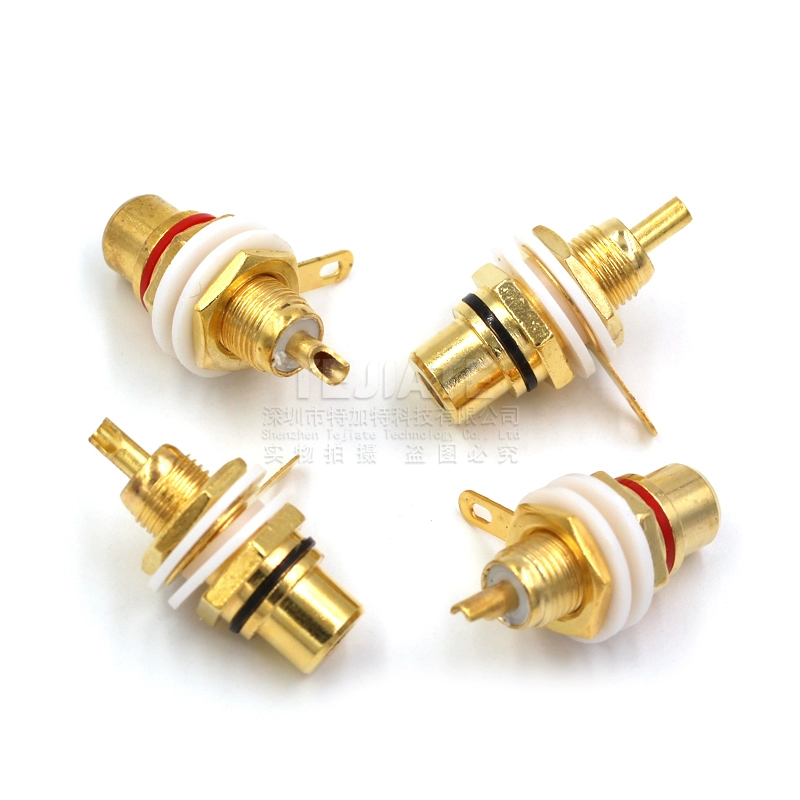
The image presents an RCA AV cable product highlighting the color‑coded plugs and typical use with legacy AV devices (e.g., TVs, DVD players, camcorders). The nearby text contrasts consumer AV cabling with high‑frequency RF hardware, so this photo focuses on the RCA product’s appearance and intended analog AV connection.
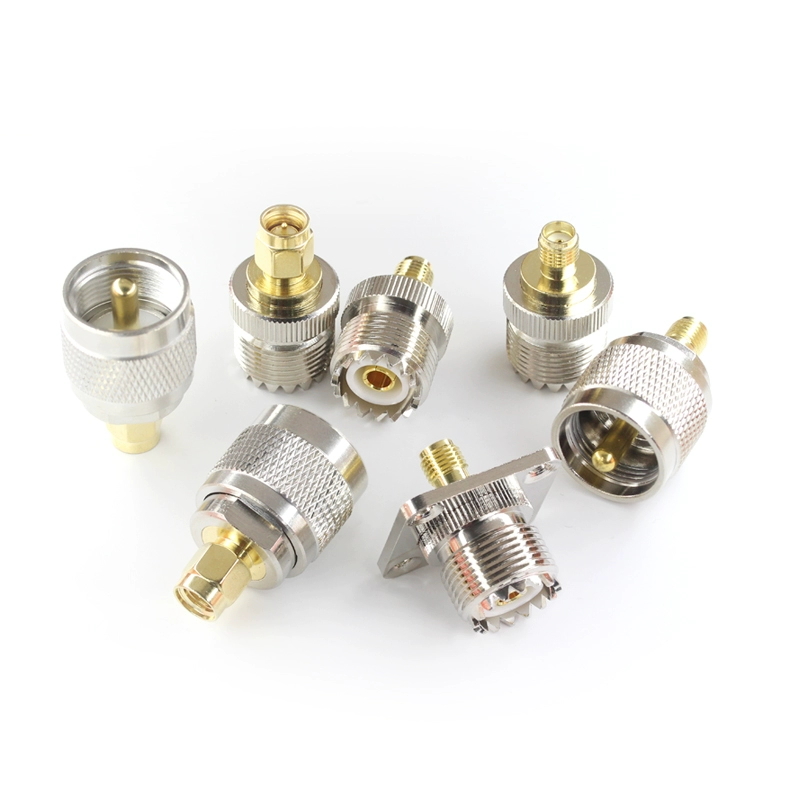
This photo shows professional-grade coaxial connectors, featuring stainless steel housings, gold or silver plating, and PTFE insulation to ensure durability and signal integrity in harsh environments.
To really see why a professional RF adapter is in a league of its own, it helps to line it up next to the kind of adapter you’d use in a living room. The difference isn’t just about price — it’s about performance, precision, and the stakes involved.
| Feature | Consumer AV Adapter (RCA/HDMI/TV Coax) |
Professional RF Adapter (Precision Coax) |
|---|---|---|
| Frequency Range | kHz–MHz (audio / baseband video) | GHz–110 GHz (RF & millimeter-wave) |
| Signal Type | Audio or video (low-frequency analog/digital) | High-frequency RF/microwave signals (wireless data) |
| Precision | Standard workmanship, loose tolerances | Micron-level machining and fit |
| Use Cases | TVs, stereos, set-top boxes | 5G towers, satellites, radar, lab test equipment |
| Customization | Very limited, one-size-fits-all | Fully customizable — interface type, frequency band, materials, plating |
A consumer HDMI or RCA adapter can get away with a lot. Impedance mismatches? A fraction of a dB loss? No one notices at 10 kHz. But in a high frequency RF adapter handling 10 GHz, even a tiny mismatch can cause serious loss, degraded data rates, or damage to sensitive components.
That’s why precision coaxial adapters in professional systems use carefully engineered interfaces — often threaded or lock-coupled instead of simple push-fit — to create a vibration-proof, mechanically stable connection. The materials are just as deliberate: stainless steel or brass housings, gold or silver-plated contacts, and PTFE insulators to ensure stable performance over hundreds or thousands of mating cycles.
In short, consumer adapters are built for convenience. Professional RF adapters are built for survival in harsh, high-frequency environments — delivering signal integrity, mechanical durability, and long-term reliability where it truly matters.
Types of RF Adapters for High-Frequency Systems
Professional RF adapters aren’t one-size-fits-all. They’re engineered in many forms to handle different connector standards, frequencies, and applications. Below is a streamlined look at the most common categories.
1. Precision Coaxial Adapters
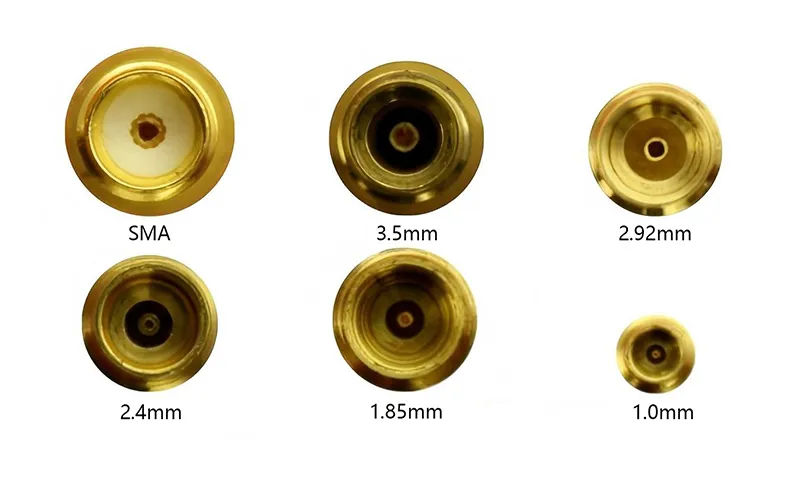
This image displays precision coaxial adapters from SMA to 1.0 mm types, capable of operating from 18 GHz up to 110 GHz for advanced measurement and communication systems.
(SMA, 3.5 mm, 2.92 mm, 2.4 mm, 1.85 mm)
| Connector Type | Max Frequency | Common Uses | Notes |
|---|---|---|---|
| SMA adapter | 12–18 GHz | Radios, RF modules, lab test gear | Small, threaded, very common |
| 3.5 mm | ~34 GHz | High-precision lab setups | SMA-compatible, better HF performance |
| 2.92 mm adapter (K) | 40 GHz | Spectrum analyzers, high-speed links | Low loss, SMA-compatible |
| 2.4 mm | ~50 GHz | Millimeter-wave testing | Stable under high VSWR |
| 1.85 mm (V) | 67–70 GHz | Advanced mmWave & radar | Ultra-precision machining |
| 1.0 mm | 110 GHz | Extreme lab use | Rare, specialized equipment |
Example in action: Connecting an SMA adapter from a signal generator to a 2.92 mm adapter on a spectrum analyzer for high-frequency measurement.
2. General RF Connector Adapters
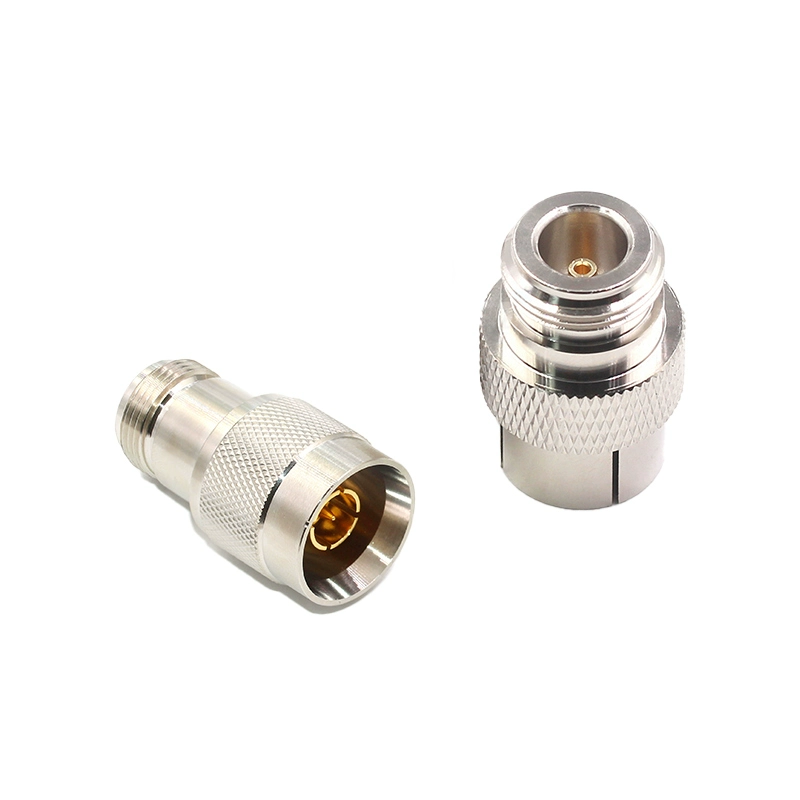
This product is an N-Type RF connector adapter designed for outdoor telecom, radar, and microwave systems, featuring weather resistance and low signal loss at high frequencies.
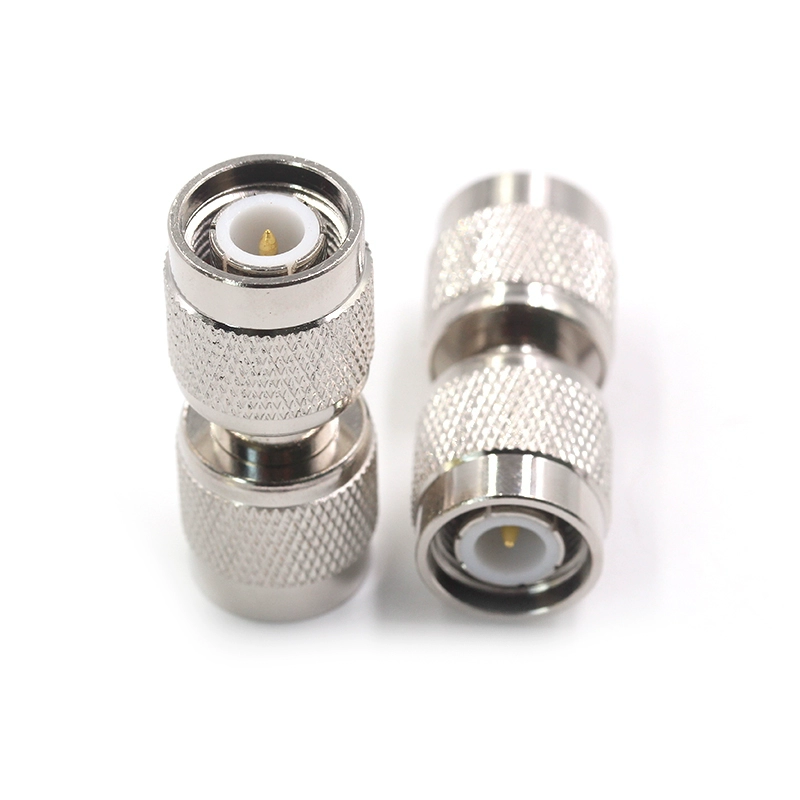
This TNC adapter ensures low-loss performance and enhanced mechanical stability, making it suitable for RF communication in mobile and outdoor environments.
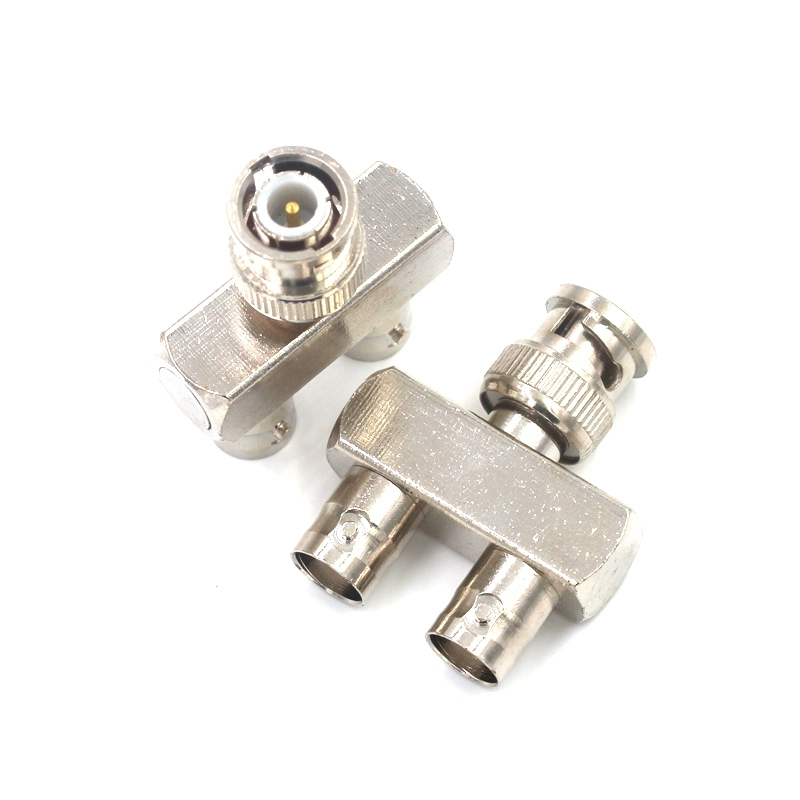
This BNC connector adapter offers a quick bayonet coupling mechanism, ideal for lab measurements, CCTV, and RF signal routing in broadcast equipment.
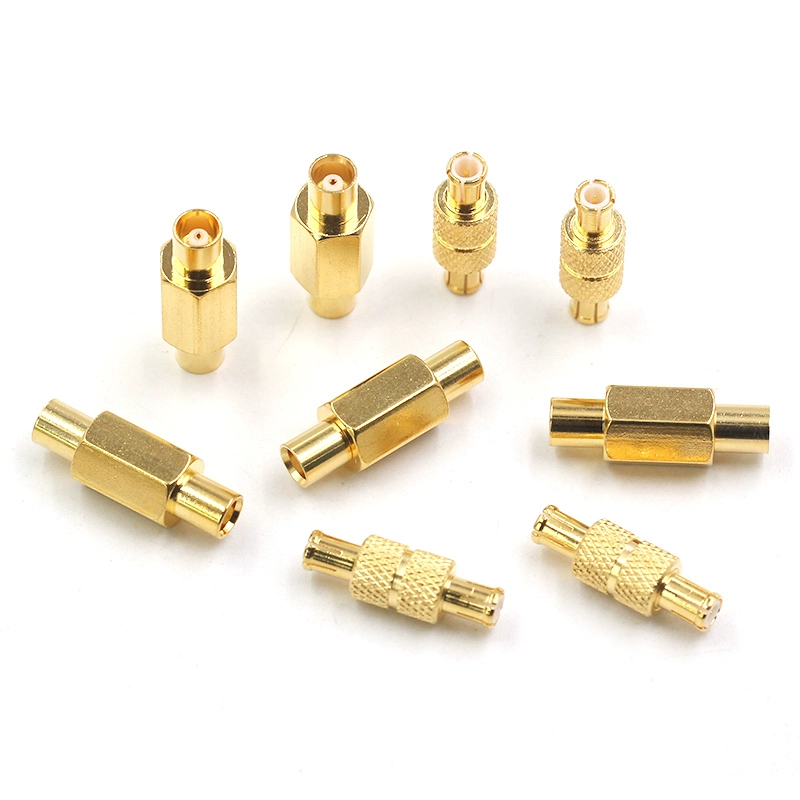
This MMCX adapter is designed for compact devices such as GPS modules, wireless cards, and IoT sensors, offering reliable signal connection in small form factors.
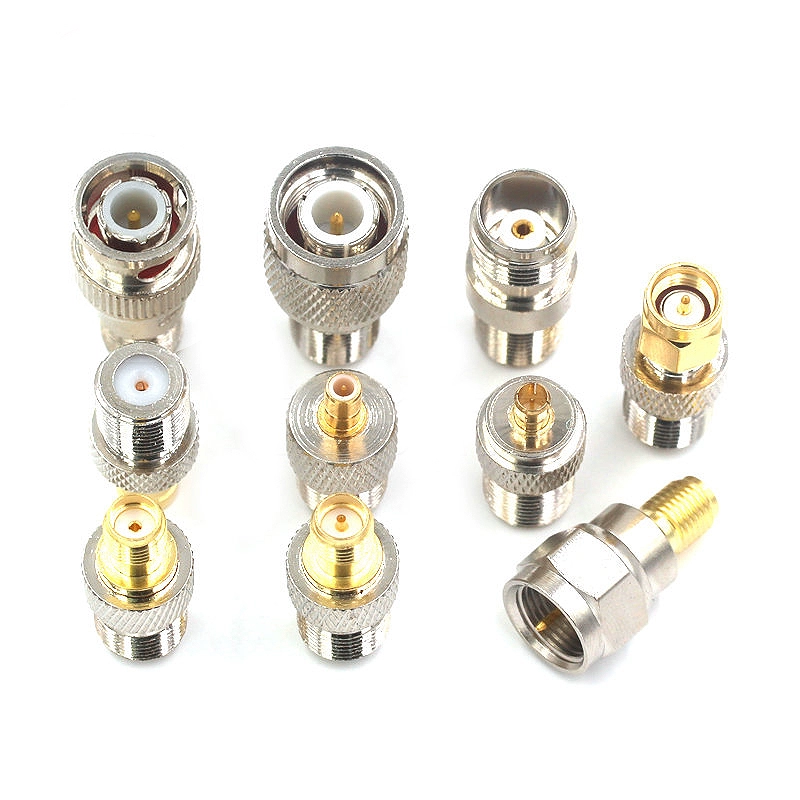
This F-Type adapter is widely used in CATV, satellite receivers, and broadband internet installations, offering low cost and reliable RF performance.
(N-Type, BNC, TNC, F-Type, MMCX)
| Connector | Max Frequency | Typical Application | Key Benefit |
|---|---|---|---|
| N-Type | 11–18 GHz | Base stations, radar | Rugged, handles high power |
| BNC | ~4 GHz | Test gear, radio, CCTV | Quick bayonet lock |
| TNC | ~11 GHz | Avionics, mobile comms | Vibration-resistant |
| F-Type | Few GHz | TV, satellite | 75 Ω, low-cost |
| MMCX / MCX | ~6 GHz | GPS, IoT modules | Tiny, snap-on |
Example in action: Using an N-Type to TNC adapter to retrofit a mobile radio antenna connection without replacing the whole cable run.
3. Waveguide-to-Coax Adapters
| Spec | Detail |
| Use Case | Frequencies > 50–60 GHz or extremely high power |
| Design | Coax connector (2.4 mm, 1.85 mm or custom RF adapter) on one side, flanged waveguide port on the other |
| Performance | Ultra-low loss & VSWR at extreme frequencies |
| Example | Linking a 94 GHz radar waveguide to a network analyzer via a 110 GHz adapter |
Why it matters: At extreme millimeter-wave frequencies, coax connectors alone aren’t enough. A waveguide-to-coax RF adapter bridges the gap so test gear and antennas can still connect efficiently.
Other Formats You’ll See:
- In-series adapters (same connector type, different genders, e.g., SMA-female to SMA-female)
- Inter-series adapters (different connector families, e.g., SMA to BNC)
- Specialty shapes (right-angle, tee, splitter)
For a real-world variety, browse the TEJTE RF Adapter catalog — it’s a visual reminder of how many mix-and-match situations engineers face.
Why Custom RF Adapters Matter for B2B Clients
Consumer adapters live in a predictable world.
Professional RF systems don’t — they face unique interfaces, strict performance demands, and harsh environments.
Here’s why custom RF connectors are often the smarter choice for business-critical projects.
| Reason | What It Means for You |
|---|---|
| Uncommon Interface Pairings | Your 3.5 mm precision port may need to connect to an N-Type feed or a proprietary micro-coax. Off-the-shelf options rarely match perfectly; a custom SMA adapter ensures compatibility without redesign. |
| Exacting Electrical Specs | In 28 GHz 5G backhaul, VSWR >1.2 or >0.2 dB insertion loss can degrade performance. Tailored RF adapters are tuned for your band to minimize reflections and preserve signal strength. |
| Ruggedized for Harsh Use | Outdoor towers, aircraft, or industrial floors demand more than basic plating. Custom builds use stainless steel, IP-rated seals, and even MIL-spec designs—ideal for a millimeter-wave adapter in avionics. |
| Fast Prototype to Production | Need 20 units for testing, then 2 000 for rollout? With a partner like TEJTE, you can go from CAD design to lab-ready hardware in weeks, then scale without losing spec consistency. |
Real-world takeaway: In B2B RF work, the adapter is part of the system’s backbone — not an afterthought. The right custom RF connector makes the difference between a link that just works and one that excels in the field.
Industries & Applications That Rely on RF Adapters
In the RF world, adapters quietly hold entire systems together.
Whether you’re looking at a 5G tower, a radar array, or a production line test bench, there’s usually a small but critical link making sure different components can actually talk to each other.
Telecom & Wireless
Telecom sites are rarely uniform. A 5G base station might need a high frequency RF adapter to connect a compact radio module to standard lab measurement ports. In some upgrades, engineers swap out bulky 7/16 DIN connections for modern 4.3-10 interfaces without replacing the whole cable run. Satellite ground stations face a similar challenge, bridging coax lines to waveguide assemblies for Ku/Ka band feeds.
Test & Measurement
If you’ve ever worked in an RF lab, you know adapters are everywhere. An SMA-to-N on one bench, a 2.92 mm adapter on another — all there to keep tests moving without ordering new cables every week. Precision coaxial adapters are especially valued here because measurement accuracy can drift if connector losses stack up, even after thousands of mate–unmate cycles.
Aerospace & Defense
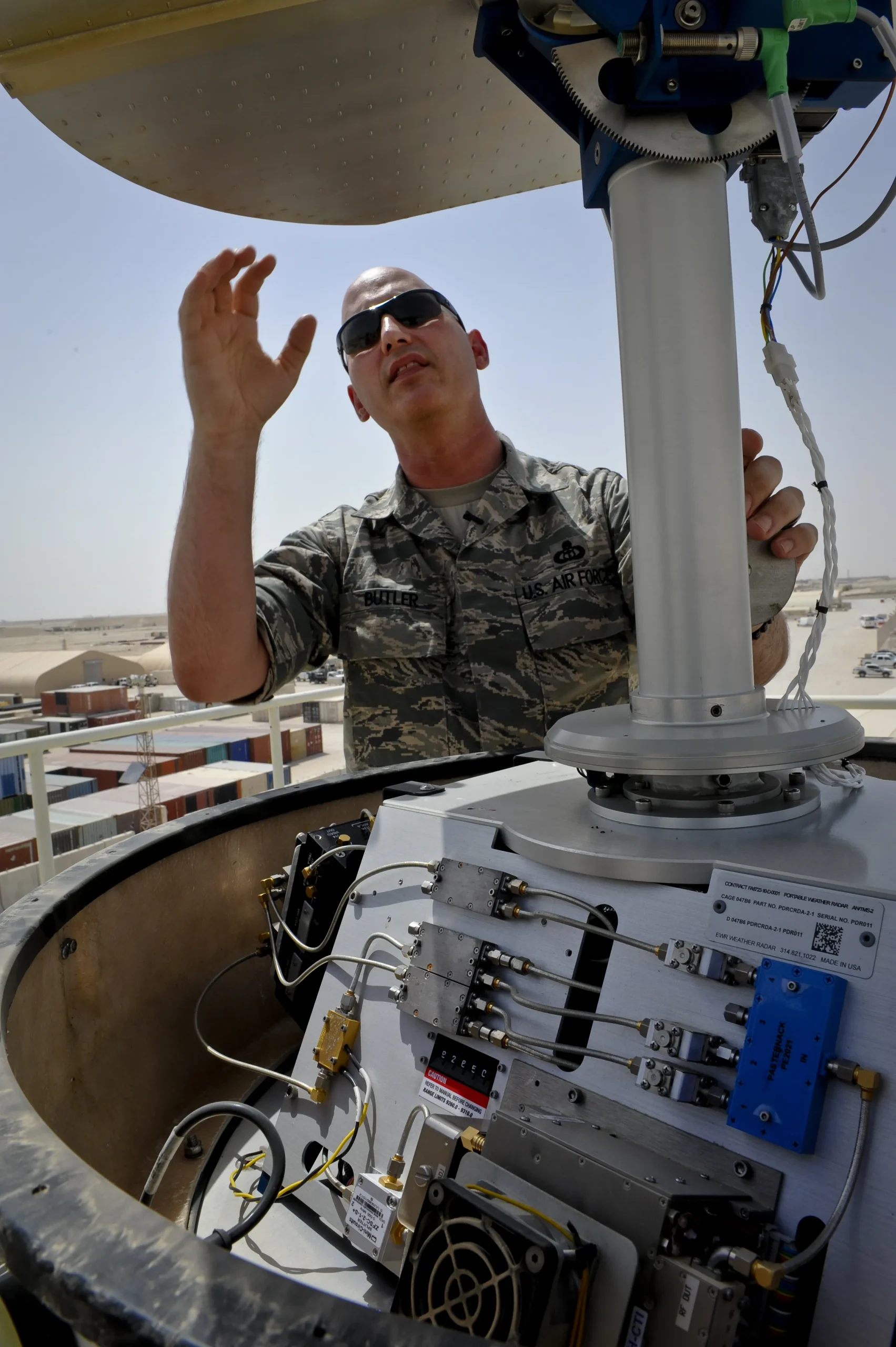
This image shows a radar array device composed of multiple antenna elements with integrated RF electronics. In the article’s context, it exemplifies mission‑critical RF hardware requirements—robust connectors, low‑loss cabling, and precision adapters—to preserve signal integrity and reliability under harsh conditions.
In this space, durability is just as critical as electrical performance. Radar arrays, avionics systems, and tactical radios often need a custom RF connector that can adapt between ruggedized field hardware and delicate lab-grade equipment. These parts are usually MIL-STD compliant, built to shrug off vibration, heat, and shock without breaking signal stability.
IoT & Industrial Automation
On a factory floor or in a large IoT deployment, it’s common to see miniature MMCX or U.FL ports side-by-side with standard SMA gear. An MMCX-to-SMA link can make device testing straightforward, while a millimeter wave adapter keeps high-frequency industrial comms running smoothly in electrically noisy environments.
From medical imaging rooms to automotive radar systems, the same rule applies: the right RF adapter keeps the connection clean, the signal strong, and the workflow uninterrupted.
How to Choose the Right RF Adapter
Picking the right RF adapter isn’t just a matter of matching connector names — it’s about ensuring your link works flawlessly under real-world conditions. The wrong choice can lead to unexpected signal loss, mismatched impedance, or even mechanical failure over time.
Here’s what to keep in mind when deciding:
Connector Type & Gender
Double-check both ends — SMA, N-Type, BNC, 2.92 mm, MMCX, and so on — plus whether you need male, female, or genderless couplers. It sounds basic, but many field delays come from a connector mismatch.
Frequency Range & Impedance
If your system operates at 18 GHz, 40 GHz, or even 110 GHz, choose an adapter rated well above that. Likewise, match the impedance — most RF work uses 50 Ω, but some broadcast gear still runs at 75 Ω. Mixing them can degrade performance.
Power Handling & VSWR
Higher transmit power means you’ll need an adapter that won’t overheat or cause reflection. Look for low VSWR specs (1.2:1 or better) for sensitive applications like test & measurement.
Material & Build Quality
Brass may be fine for short-term indoor setups. For mission-critical or outdoor use, opt for stainless steel or passivated alloys. These resist corrosion and hold tolerances longer.
Environmental Conditions
In aerospace, defense, or industrial automation, vibration, moisture, or extreme temperatures can destroy a standard adapter. This is where ruggedized RF adapters — often MIL-STD compliant — are worth the investment.
Pro tip from the field: When in doubt, test the adapter in the actual setup before ordering in bulk. On paper, two models might look identical, but small mechanical or plating differences can make or break performance at high frequencies.
If you’re unsure, a supplier like TEJTE can help you cross-match specifications, recommend the right custom RF connector, or even build a millimeter wave adapter for your exact frequency and environment.
Conclusion and Next Steps
In professional RF work, an adapter is more than just a way to “make things fit.”
It’s the handshake between systems that were never built to meet — and if that handshake isn’t rock-solid, the whole link can falter.
Throughout this guide, we’ve seen how RF adapters differ from their consumer cousins. They’re designed for high-frequency operation, built with precision down to the micron, and tested in conditions that mimic the real demands of telecom networks, radar systems, aerospace comms, and beyond. In industries where uptime is non-negotiable, the wrong adapter isn’t just inconvenient — it’s expensive.
Whether you’re integrating a new 5G module, adapting a waveguide to coax in a satellite feed, or calibrating test equipment at 40 GHz, the same truth applies: the right high frequency RF adapter preserves performance, protects your investment, and keeps data moving without interruption.
If you’re working on a project that needs more than an off-the-shelf fix, this is where a custom RF connector earns its keep. With TEJTE, you can get solutions tailored up to 110 GHz — from a compact SMA right-angle for tight racks to a millimeter wave adapter ruggedized for outdoor or aerospace use.
Every connection matters. Make yours a strong one. Talk to the TEJTE team and let us help you design or choose the adapter that will keep your system performing at its best.
Bonfon Office Building, Longgang District, Shenzhen City, Guangdong Province, China

A China-based OEM/ODM RF communications supplier
Table of Contents
Owning your OEM/ODM/Private Label for Electronic Devices andComponents is now easier than ever.
